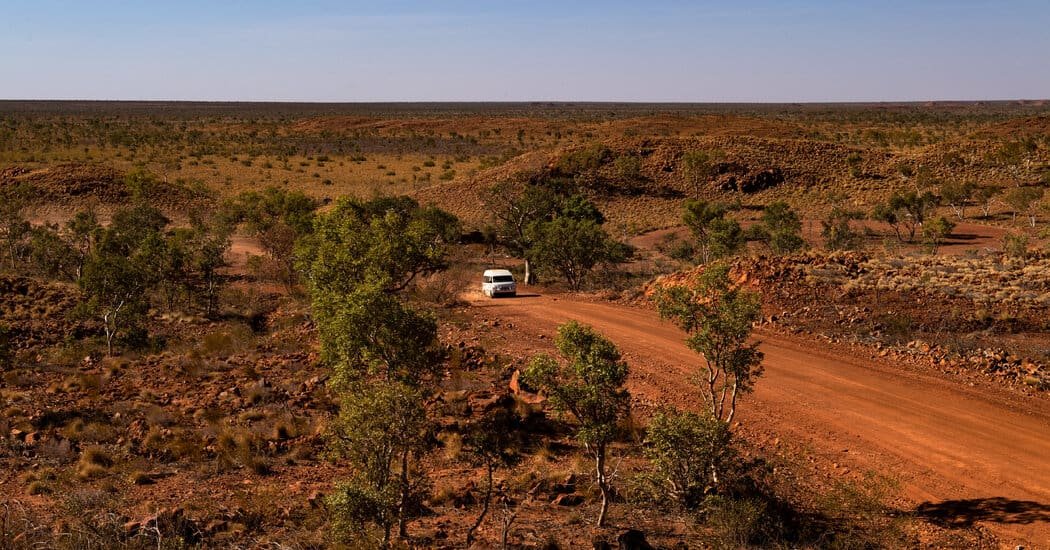[ad_1]
The Australia Letter is a regular e-newsletter from our Australia bureau. Today’s concern is composed by Julia Bergin, a press reporter based in the Northern Area.
Driving with Central Australia can be a fight with dirt, floodings, fires, broke down roadways and network failings. And when the freight is food, also a small obstacle can have significant consequences.
The remote Native neighborhood of Lajamanu was established in the North Area by the Australian federal government in 1949. Loads of individuals, currently displaced from their conventional homes, were relocated there from one more neighborhood concerning 350 miles away due to congestion and water lacks.
Today, Lajamanu has a populace of concerning 800. Like numerous various other remote neighborhoods in Australia, it is maintained by a solitary shop that markets whatever from food to baby diapers to cleaning devices. The shop is provided as soon as a week, in some cases every 2 weeks, by vehicle chauffeurs that need to emulate the area’s rough problems and treacherous facilities.
For the initial couple of months of this year, the only roadway right into Lajamanu was removed by a mix of document rains, tornados and flooding. The routine distribution quit, and supplies of food, water, medication and various other fundamentals started to decrease. The neighborhood, claimed Andrew Johnson, a Warlpiri male and Lajamanu older, was experiencing, especially from the absence of food.
” No toughness, no power,” he claimed.
Under federal government plan, the shop needs to have been gotten ready for such an end result, offered the predictability of the yearly damp period. As points worsened, citizens and vendors consistently interested the federal government of the North Area to proclaim an emergency situation.
” The silence was deafening,” claimed Alastair King, the head of the Arnhem Land Progression Aboriginal Firm, or A.L.P.A., a not-for-profit company that runs the Lajamanu shop and others in remote neighborhoods. “They really did not react, really did not inform us what it would certainly require to proclaim an emergency situation and really did not inform us why it was not proclaimed an emergency situation.”
So A.L.P.A. arranged unique vehicles and little day-to-day charter trips to generate materials. It wound up doing so for months– investing greater than 350,000 Australian bucks, concerning $232,000– yet the Lajamanu shop’s racks remained primarily bare.
” I was anticipating the large military airplane, the Hercules, to bring all the food, yet all I saw was the one-engine air charter stepping and forwards going down bit by little bit,” Mr. Johnson claimed. “It had not been sufficient. It had not been dealt with as an emergency situation and taken seriously.”
Similar scenarios were unraveling concerning 500 miles away in the remote Native neighborhood of Minyerri, likewise referred to as Hodgson Downs, and 750 miles away in one more, Borroloola, both of which had actually likewise been removed by swamping.
In Borroloola, food supplies were decreasing, panic acquiring was reported, money withdrawals were restricted and there was no phone company or network protection, making charge card settlements difficult. In late March, months after the initial charms for aid were made, the armed force was generated to assist evacuate Borroloola residents. The Northern Land Council, which stands for Native individuals in the area, claimed the reaction to the catastrophe by the government and North Area federal governments had actually been “appalling.”
The subsistence supply version is the standard in many remote Native neighborhoods. It’s the item of years of interventionist plan that relocated individuals from their conventional homelands. Currently, whenever food protection is intimidated by supply chain problems, citizens are required to interest the federal government for aid.
In Lajamanu, 3 months after the routine vehicle shipments quit, an A.L.P.A. worker informed the territorial federal government in an e-mail that the neighborhood remained in a “really essential” state. There were no eggs, shelf-stable milk, icy meat or toilet tissue.
A representative for the Northern Area federal government claimed a “food protection strategy” was executed in late March, 2 days after the A.L.P.A. worker’s e-mail was obtained, consisting of government-funded day-to-day charter trips that generated materials till the roadways were useful once again.
Mr. King claimed the federal government began spending for trips just after an individual charm was made to Chansey Paech, the attorney general of the United States for the North Area. Mr. Paech decreased to comment.
An underlying source of the situation, Mr. King claimed, was the federal government’s failing to make sure that roadways can stand up to the damp period. Indicating images of sloppy, broke down and entirely immersed roadways, Mr. King claimed the outcome had been thousands of individuals caught and going starving.
” If that’s not an emergency situation, after that what is?” he claimed.
Currently right here are our tales of the week.
Are you appreciating our Australia bureau sends off?
Tell us what you assume at NYTAustralia@nytimes.com.
Like this e-mail?
Forward it to your buddies (they could utilize a little fresh viewpoint, right?) and allow them understand they can join right here.
[ad_2]
Source link .




